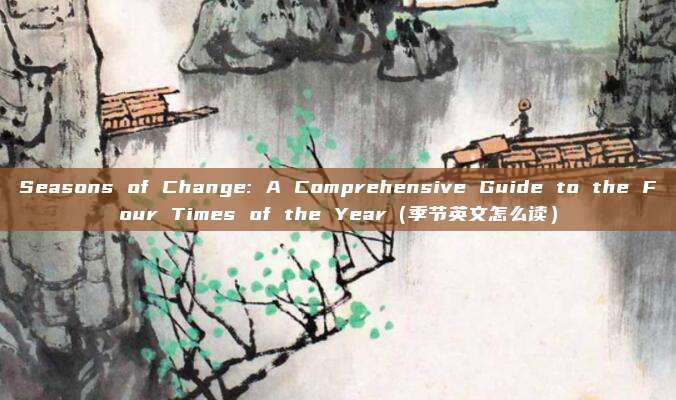Seasons of Change: A Comprehensive Guide to the Four Times of the Year(季节英文怎么读)
温馨提示:这篇文章已超过219天没有更新,请注意相关的内容是否还可用!
Introduction:
The changing seasons are a natural and inevitable part of life, each bringing its unique charm and challenges. Whether it's the crisp air of autumn, the blooming flowers of spring, the scorching heat of summer, or the snowy landscapes of winter, understanding the characteristics of each season can help us prepare and enjoy the best they have to offer. In this comprehensive guide, we'll delve into the four times of the year, their related terms, and how they impact our daily lives.
Spring:
Spring, often associated with the term "vernal equinox," marks the beginning of the year and brings with it the rebirth of nature. This season is characterized by warmer temperatures, blossoming flowers, and the return of migratory birds. The phrase "springtime" encapsulates the essence of renewal and awakening. During this season, one can witness the transformation of barren landscapes into lush gardens, making it the perfect time for outdoor activities like hiking and picnicking.

Summer:
Summer, known as "summer solstice" in its peak, is synonymous with warmth, sunshine, and long days. It's a season where the term "midsummer" is often used to describe the height of summer. As temperatures soar, it's important to stay hydrated and protected from the sun's harmful rays. The phrase "summer vacation" is a time when many people take a break from their daily routines to relax and enjoy the season's activities, such as swimming, sunbathing, and attending summer festivals.
Autumn:
Autumn, or "fall," is the season of change and transition. It's marked by the term "autumn equinox," symbolizing the balance between day and night. As the leaves change color and fall from the trees, this season is often referred to as "fall foliage." The phrase "autumnal equinox" describes the exact moment when the days and nights are equal in length. It's a season of harvest, cozy fires, and pumpkin everything. Autumn is the perfect time for autumnal equinox activities like apple picking, hayrides, and enjoying the crisp air.
Winter:
Winter, known as "winter solstice," is the coldest season of the year. It's characterized by snow, ice, and the shortest days of the year. The phrase "wintertime" evokes images of warm blankets, hot chocolate, and festive celebrations. As the days grow shorter, it's important to stay active and take precautions to avoid the cold-related health risks. Winter activities like skiing, snowboarding, and ice skating are popular during this season.
Conclusion:
The four seasons, each with its own unique set of terms and characteristics, offer a rich tapestry of experiences. By understanding the seasons and their related terminology, we can better appreciate the beauty and challenges they bring. Whether it's preparing for the warmth of spring, staying cool during summer, embracing the fall foliage, or bracing for winter, being aware of the times of the year helps us live more harmoniously with nature.
According to a report by the National Centers for Environmental Information, seasonal variations in temperature and weather patterns can have a significant impact on agricultural productivity, human health, and the global climate system. As such, it's crucial to be informed about the seasons and how to adapt to their demands.
In summary, the seasons of the year are not just a cycle of time; they are an integral part of our lives that shape our experiences and routines. By embracing the unique qualities of each season, we can enhance our quality of life and enjoy the wonders that nature has to offer.
网站文章、图片来源于网络,以不营利的目的分享经验知识,版权归原作者所有。如有侵权请联系删除!





还没有评论,来说两句吧...